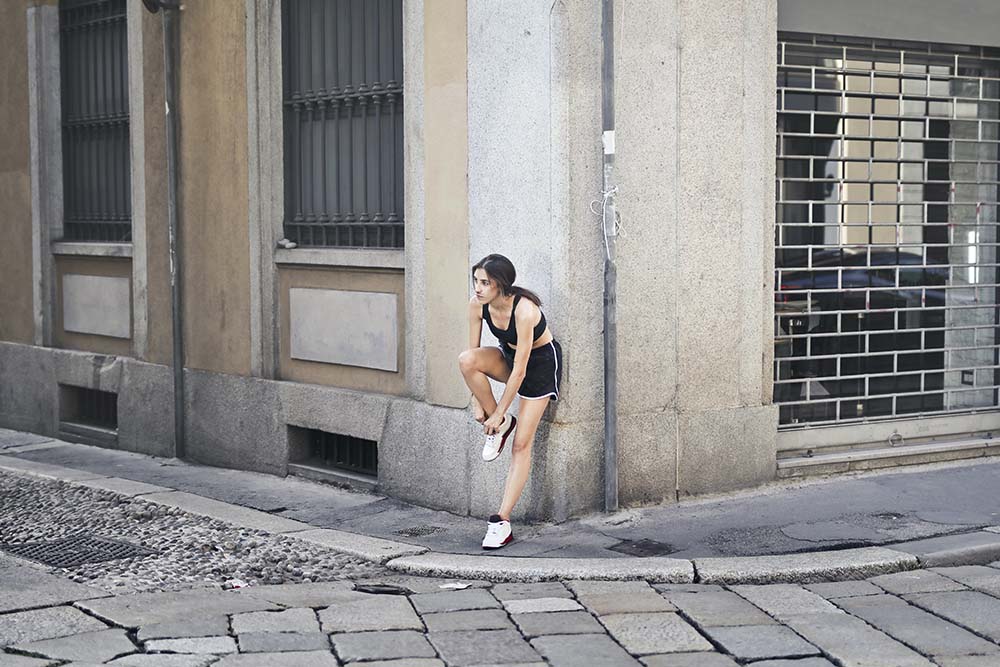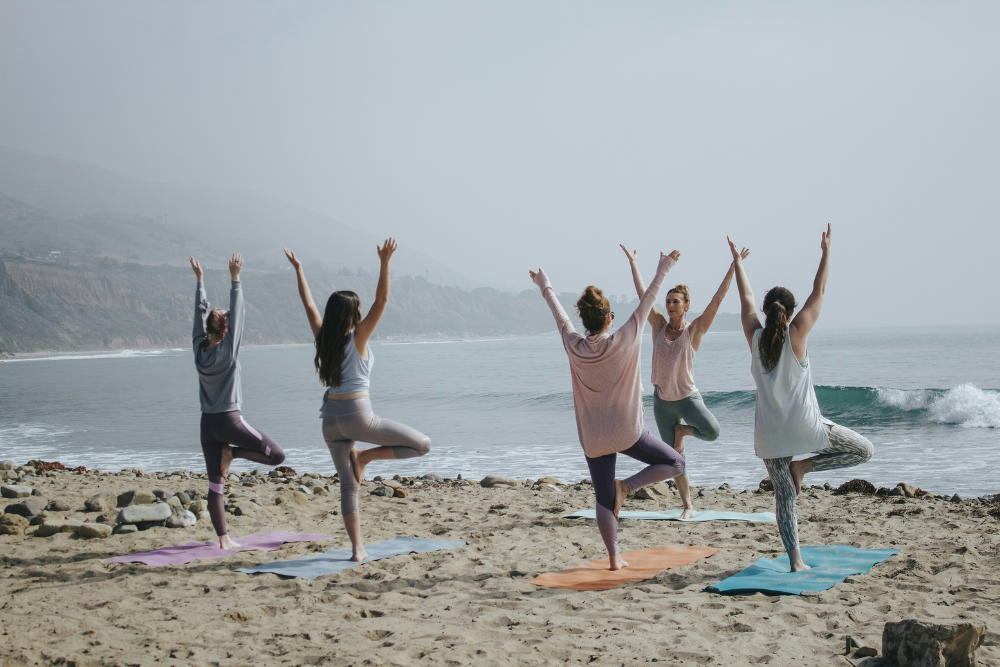Virtual Reality Exercise
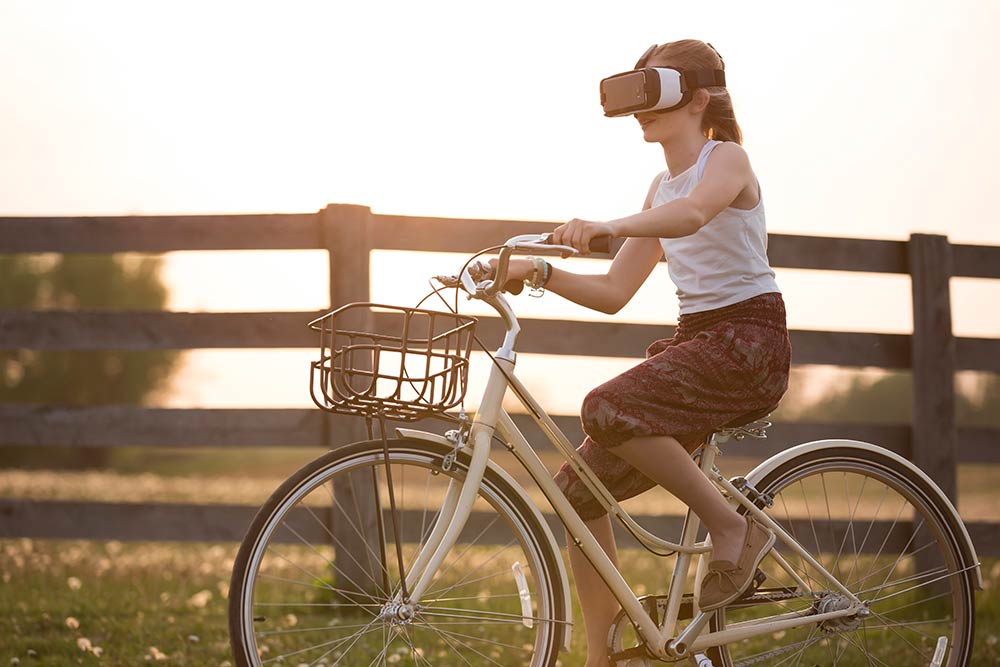
Jessica Gillespie-Friesen
What if the secret to boosting your performance at the gym was simply wearing a headset? Recent research suggests that virtual reality exercise could reduce the perception of pain and the perceived level of effort and exertion.
Virtual Reality
Virtual reality (VR) first became popular as a method of gaming in the early 1970s and ever since researchers have been exploring its potential therapeutic applications.
Virtual Reality and Cognitive Behavioral Therapy
VR was first used in a therapeutic setting as a tool for cognitive behavioral therapy and exposure therapy to treat psychological disorders such as post-traumatic stress disorder, anxiety, and paranoia (Maples-Keller, Bunnell, Kim, & Rothbaum, 2017; Rothbaum, Hodges, Ready, Graap, & Alarcon, 2001).
More recently virtual reality exercise has been successful in reducing the pain associated with medical procedures (Hoffman et al., 2011; Matsangidou, Ang, & Sakel, 2017). A recent study led by Maria Matsangidou, a researcher at the University of Kent, examined the potential for VR to be used to boost athletic performance (Matsangidou, Ang, Mauger, Intarasirisawat, Otkhmezuri, & Avraamides, 2018).
The Study
80 individuals were randomly assigned to either the virtual reality exercise group or the control group. Both groups were placed in the same room and asked to perform the same exercise They did an isometric bicep curl set at 20% of the maximum weight they could lift. The VR group was instructed to wear the Samsung Gear 1 VR headset which showed them the same environment that they were in, including a virtual arm and the weight.
Related Article: An Alternative Approach to Sports Injuries
The Results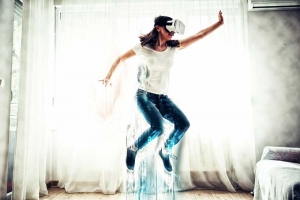
The VR groups showed a clear reduction in pain perception and perceived exertion compared to the control group. The VR group reported a pain intensity that was, on average, 10% lower than the control group. In addition, the time to exhaustion was approximately 2 minutes longer for the VR group and their heart rate was lower by 3 beats per minute.
The Science Behind It
Using virtual reality in exercise training is fairly novel, therefore, the science behind it is not yet well researched. Some theories have been suggested as to how VR may reduce pain perception, but the overall mechanism is still largely unknown.
The Distraction Hypothesis
The distraction hypothesis states that VR technology can reduce pain perception by creating a distraction. Diverting attention away from the pain using VR limits the amount of attention available for pain processing and thus reduces the perception of pain (Loreto-Quijada et al., 2014; Wickens, 2008).
While there is a large number of studies that support the distraction hypothesis, the study conducted by Dr. Marsangidou had participants view the same environment they were but in virtual reality. Therefore, it is possible that there are other mechanisms at work. Marsangidou proposes a few mechanisms in her paper that require further research.
Pain Perception
Possibly the most intriguing of the mechanism proposed is that the participants embodied the virtual environment and felt the virtual arm as their own. The VR arm did not have the classic visual stimuli associated with pain and exertion such as skin redness, sweat or bulging veins (Matsangidou et al., 2018).
Since the participants did not see the visual stimuli that they associate with pain and exertion, their brain did not perceive the same level of pain or exertion as it would have without VR.
This hypothesis is backed up by previous research that shows that areas of the brain associated with bodily consciousness are by sensory stimulation of a fake body part (Tsakiris, Hesse, Boy, Haggard, & Fink, 2006).
Finally, a 2013 study suggested that it is possible that mirror neurons – neurons that are active when a person observes another performing the same action as them – may be activated when using VR. Their idea is that by watching pain decline in another, mirror neurons become active and effectively reduce pain in the observer (Shiri et al., 2013)
Exercising With Virtual Reality
The results from this study suggest that virtual reality exercise can increase athletic performance by reducing the perception of pain and perceived effort. Furthermore, the reduction in heart rate in the VR group suggests that virtual reality exercise would be a good alternative for individuals suffering from cardiovascular problems – such as angina or high blood pressure – that require them to maintain a certain heart rate.
VR exercise is also a potential way to encourage less active people to exercise more often by promising them a reduction in pain perception. Lead researcher Maria Matsangidou said: “It is clear from the data gathered that the use of VR technology can improve performance during exercise on a number of criteria”. VR exercise could have major implications for professional athletes in the future.
The Gear
Believe it or not, there are many affordable options of virtual reality systems available both in-store and online.
Oculus Rift
Oculus Rift is one of the most technologically advanced systems available where users can choose between many virtual reality fitness games such as boxing, sword fighting or archery.
Samsung VR
Samsung VR gear is a more affordable option that includes a headset and a pair of motion-sensing hand controllers. Users connect their gear to their Samsung phone and use the apps to play games.
Google Cardboard
The least expensive option is the Google Cardboard, however, the fitness games for this device are limited.
Black Box
A very new advance in the field of virtual reality exercise training is the Black Box. Black Box VR is the world’s first virtual reality exercise gym. Users step into a black box equipped with a virtual reality headset, cable pulley system and motion-sensing hand controllers. The aim of the game is to break through the enemy’s gate and destroy their crystal.
The Sessions
In each 30-minute session, the user must try to destroy as many crystals as they can. The amount of crystals destroyed corresponds to points earned which allows users to earn trophies, level up and unlock new features. The actual exercise routine is quite simple; chest press, row, lat pulldown, squat, deadlift and active rest.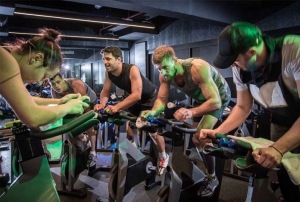
Each of these exercises corresponds to a different attack or defense, for example, a row is a lightning bolt and a chest press is a meteor. On average the user will complete 2-4 sets of approximately 10-15 reps of each of these exercises which active rest.
Black Box VR Launch
Black Box VR hopes to launch their new technology by the end of this year. Unfortunately, they will not be available for home purchase, instead, they will only be available in boutique gyms.
Related Article: Zwift Cycling: An Indoor Virtual Cycling Experience
Other Applications of VR-Based Training
Not only does VR technology have the potential to boost athletic performance, but VR training can be used to improve mobility in individuals with impaired balance.
Improving Balance with Virtual Reality
Research suggests that VR training improves balance and motor function by activating areas in the brain responsible for motor control.
It is possible that these activations may help with the reconstruction of neurons in the brain. This would improve neurological function and increasing the brains control of balance (Mao, Chen, Li, & Huang, 2014).
Virtual Reality & Rehabilitation
Research surrounding rehabilitation and management of disorders that cause balance impairments. Examples include Multiple sclerosis, Parkinson’s and stroke, have shown the benefits of following a VR-based intervention. Results from studies comparing VR-based intervention to standard physical therapy show that patients following the VR-based intervention have greater improvements.
These improvements were in balance, mobility and walking speed, as well as a decreased risk of falling (Lloréns, Gil-Gómez, Alcañiz, Colomer, & Noé, 2015; Corbetta, Imeri, & Gatti, 2015; Eftekharsadat et al., 2015; Kottas Loizos, Gkrimas, Pyrgeil, 2018).
A 2015 study suggests that VR training may be more effective than traditional exercise in improving dynamic balance due to increased motivation and active participation. They suggest that the knowledge of performance and results allows the participants to make corrections in order to improve their performance (Liao, Yang, Cheng, Wu, Fuh, & Wang, 2015).
How Virtual Reality Can Help The Elderly
Falls are common in the elderly and can cause serious injuries, in fact, falls are the leading cause of injuries resulting in death in the elderly population. Approximately 30% of individuals above the age of 65 experience at least one fall per year which accounts for over 2 million emergency room visits per year in the United States.
Balance is an important aspect of fall prevention and balance training has been shown to improve postural control. According to research, VR training can be effective in improving balance in the elderly and reduce their risk of falling. Virtual reality exercise offers a fun, interactive and economical method of improving fine motor skills, mobility and coordination (Cho, Hwangbo, & Shin, 2014).
References
Cho, G. H., Hwangbo, G., & Shin, H. S. (2014). The Effects of Virtual Reality-based Balance Training on Balance of the Elderly. Journal of physical therapy science, 26(4), 615-7.
Corbetta, D., Imeri, F., & Gatti, R. (2015). Rehabilitation that incorporates virtual reality is more effective than standard rehabilitation for improving walking speed, balance and mobility after stroke: a systematic review. Journal of physiotherapy, 61(3), 117-124.
Eftekharsadat, B., Babaei-Ghazani, A., Mohammadzadeh, M., Talebi, M., Eslamian, F., & Azari, E. (2015). Effect of virtual reality-based balance training in multiple sclerosis. Neurological research, 37(6), 539-544.
Hoffman, H. G., Chambers, G. T., Meyer III, W. J., Arceneaux, L. L., Russell, W. J., Seibel, E. J., … & Patterson, D. R. (2011). Virtual reality as an adjunctive non-pharmacologic analgesic for acute burn pain during medical procedures. Annals of Behavioral Medicine, 41(2), 183-191.
Kottas Loizos, A., Gkrimas, G., Pyrgeil, M., (2018). The effectiveness of virtual reality and treadmill training in Parkinson’s disease patients. Orthopedics & Rheumatology, 10(4), 274-280.
Liao, Y. Y., Yang, Y. R., Cheng, S. J., Wu, Y. R., Fuh, J. L., & Wang, R. Y. (2015). Virtual reality–based training to improve obstacle-crossing performance and dynamic balance in patients with Parkinson’s disease. Neurorehabilitation and neural repair, 29(7), 658-667.
Lloréns, R., Gil-Gómez, J. A., Alcañiz, M., Colomer, C., & Noé, E. (2015). Improvement in balance using a virtual reality-based stepping exercise: a randomized controlled trial involving individuals with chronic stroke. Clinical rehabilitation, 29(3), 261-268.
Loreto-Quijada, D., Gutiérrez-Maldonado, J., Nieto, R., Gutiérrez-Martínez, O., Ferrer-García, M., Saldana, C., … & Liutsko, L. (2014). Differential effects of two virtual reality interventions: distraction versus pain control. Cyberpsychology, Behavior, and Social Networking, 17(6), 353-358.
Mao, Y., Chen, P., Li, L., & Huang, D. (2014). Virtual reality training improves balance function. Neural regeneration research, 9(17), 1628-34.
Maples-Keller, J. L., Bunnell, B. E., Kim, S. J., & Rothbaum, B. O. (2017). The Use of Virtual Reality Technology in the Treatment of Anxiety and Other Psychiatric Disorders. Harvard review of psychiatry, 25(3), 103-113.
Matsangidou, M., Ang, C. S., Mauger, A. R., Intarasirisawat, J., Otkhmezuri, B., & Avraamides, M. N. (2018). Is your virtual self as sensational as your real? Virtual Reality: The effect of body consciousness on the experience of exercise sensations. Psychology of Sport and Exercise.
Matsangidou, M., Ang, C. S., & Sakel, M. (2017). Clinical utility of virtual reality in pain management: a comprehensive research review. British Journal of Neuroscience Nursing, 13(3), 133-143.
Rothbaum, B. O., Hodges, L. F., Ready, D., Graap, K., & Alarcon, R. D. (2001). Virtual reality exposure therapy for Vietnam veterans with posttraumatic stress disorder. The Journal of clinical psychiatry.
Shiri, S., Feintuch, U., Weiss, N., Pustilnik, A., Geffen, T., Kay, B., … & Berger, I. (2013). A virtual reality system combined with biofeedback for treating pediatric chronic headache—a pilot study. Pain Medicine, 14(5), 621-627.
Tsakiris, M., Hesse, M. D., Boy, C., Haggard, P., & Fink, G. R. (2006). Neural signatures of body ownership: a sensory network for bodily self-consciousness. Cerebral cortex, 17(10), 2235-2244.
Wickens, C. D. (2008). Multiple resources and mental workload. Human factors, 50(3), 449-455.
You Might Like:



